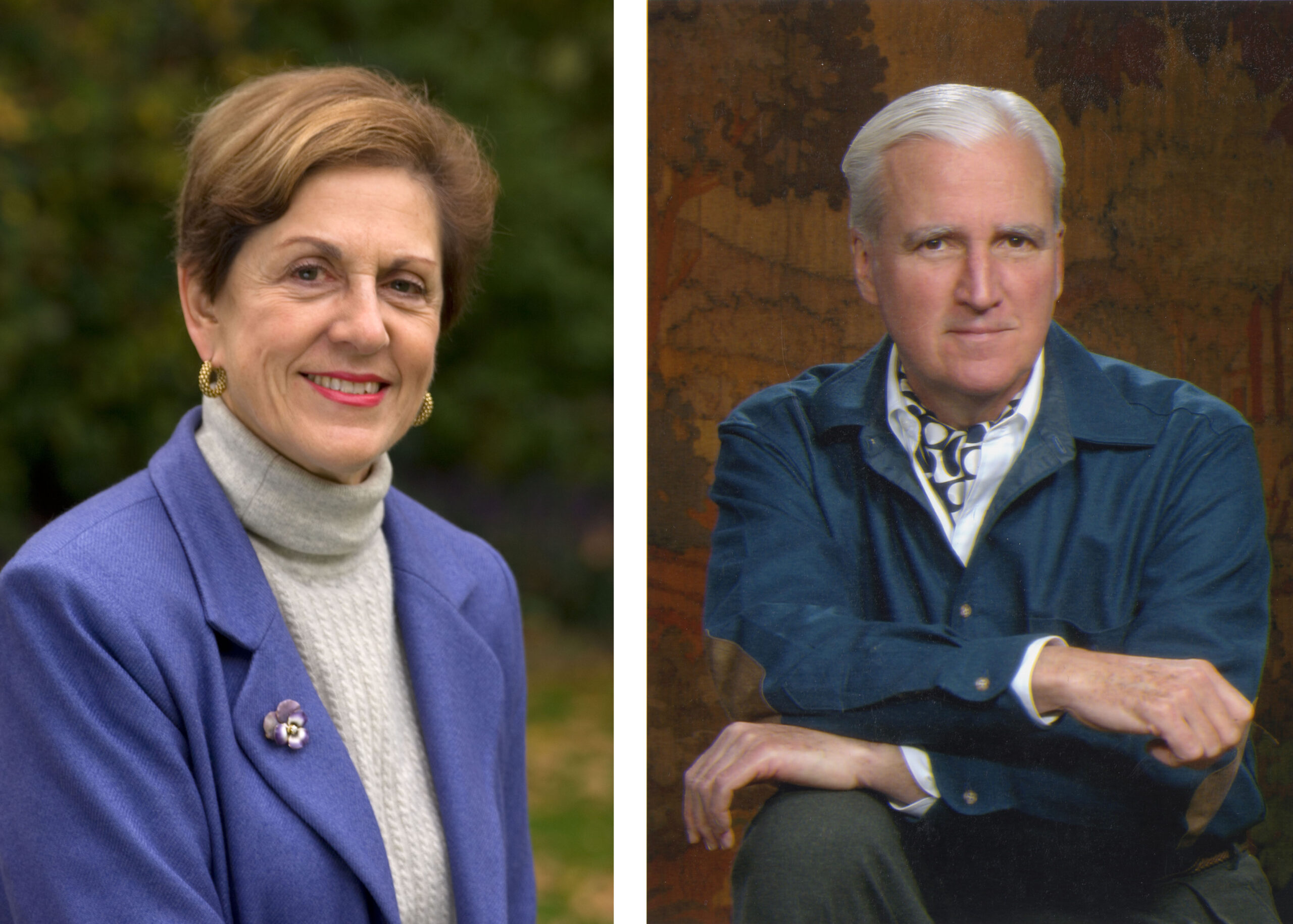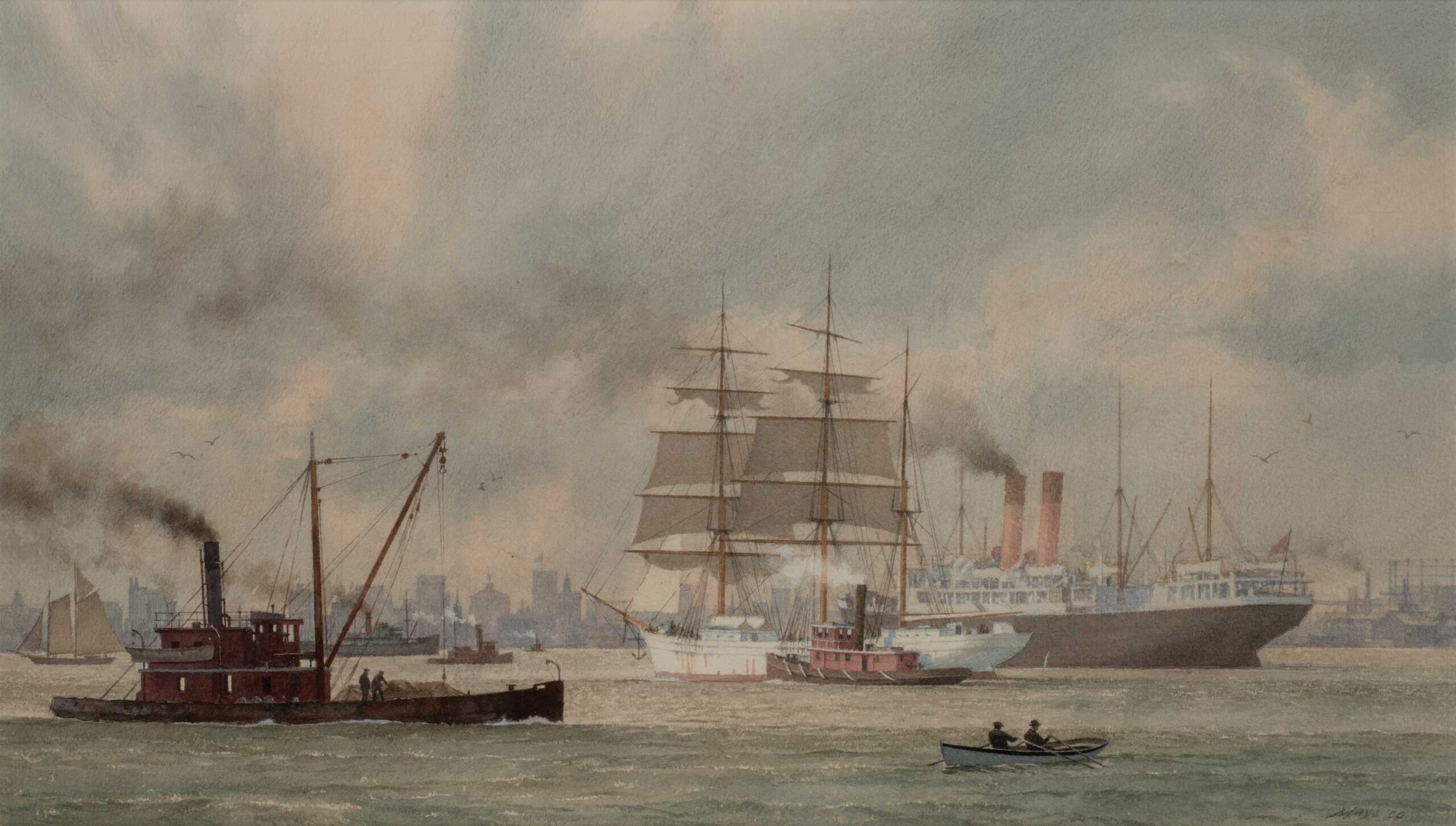Fine art collectors Charles Raskob Robinson and Barbara Paul Robinson are the proud owners of over 50 artworks created by Fellows of the American Society of Marine Artists (ASMA). A Fellow himself, Charlie Robinson is a lifelong sailor. From 1968 to 1986, he served as a vice president at Bankers Trust in Manhattan. When he learned of a company program in which secretaries and clerks could take painting classes after office hours, he enrolled, too.

After years of study, and a daily routine of rising at 5 a.m. to paint before work and attend the Art Students League of New York in the evening, Charlie resigned to create marine art full-time.
Although it dates back to the Egyptians and Greeks, marine art as we know it arose in the Netherlands during the 17th century, matured further in 18th-century England, and then reached the U.S. early in the 19th century. Given the prominent role they have played in American art, it is surprising that marine artists did not have their own national association until 1978, when Charles J. Lundgren and a dozen other professional artists and illustrators formed ASMA, a 501c3 not-for-profit educational organization.
Unlike most such groups, ASMA offers no financial incentive to its members since the works they display in its national and regional touring exhibitions are not for sale. (Of course, the presenting museums are glad to facilitate discreet communications between artists and collectors.) Today ASMA educates the public through its exhibitions, the catalogues that accompany them, the National Marine Art Conferences, instructional workshops, scholarships granted to emerging talents, and its website and quarterly publication.
ASMA has 600 members internationally, with three tiers of membership that reflect seniority and experience. The highest of these tiers is Fellow, and the Robinsons now own works by 28 of the 33 living artists who are, or have been, Fellows. Those artists: David Bareford, Christopher Blossom, June Carey, William Davis, Donald Demers, William Duffy, Lisa Egeli, Peter Egeli, Sheri Farabaugh, West Fraser, Frank Handlen, Kathleen Hudson, Neal Hughes, Norma Jay, Michael B. Karas, Russell Kramer, Loretta Krupinski, Richard Loud, Raymond A. Massey, Joseph McGurl, Leonard Mizerek, Paul Mullally, William G. Muller, C.W. Mundy, Mark R. Myers, Charles Raskob Robinson, Sergio Roffo, Kim Shaklee, John Stobart, Len Tantillo, Kent Ullberg, Robert Weiss, and Stewart White.
The Robinsons also own works by 13 of the 21 deceased Fellows: Willard Bond, Oswald L. Brett, George Campbell, William A. Ellsworth, Carl G. Evers, Fred Freeman, Mark Greene, Thomas M. Hoyne, Charles J. Lundgren, Ian H. Marshall, Lewis “Victor” Mays, Jr., James E. Mitchell, Peter W. Rogers, William E. Ryan, Robert O. Skemp, Charles E. Stanford, Robert Sticker, Donald H. Stoltenberg, Donald Stone, David Thimgan, and Thomas Winchester Wells.

Illustrated here are two pieces that reflect the field’s past and present: a carefully researched historical scene by an artist no longer with us, and a lyrical modern scene by an artist still working today. Lewis “Victor” Mays, Jr. (1927–2015) created the watercolor “New York Harbor in the Early Twentieth Century” in 2000, and Charlie acquired it directly from him in 2004 when the artist lived in Clinton, Connecticut.
The year before, Charlie had bought “Clearing: South Coast from the Massachusetts” (shown at top) artist William Duffy. He promptly loaned the latter to the ASMA Fellows Invitational Exhibition just beginning its tour to the Newport Art Museum (Rhode Island), Essex River Museum (Connecticut), and Maine Maritime Museum in Bath.
It was during that show’s opening reception in Maine that Barbara asked herself a question she had learned from her mother as a way to focus one’s mind in a crowded gallery: “Which of all of these paintings would I most like to steal?” When Barbara pointed to Duffy’s painting because she particularly admired his handling of light, Charlie replied, “Unfortunately, you cannot steal it because you already own it.” Indeed, Charlie had not yet shown the new acquisition to his wife because it had to go directly on tour.
One of the collection’s many charms is that the Robinsons know, or have known, almost all of the artists; indeed, they have watched many of them work outdoors during ASMA events. The pieces are generally small in scale because most hang in the Robinsons’ Manhattan Apartments; this explains why a few leading Fellows who only work large are not represented. It also underscores the fact that the collection was not formed to “show off,” but rather to delight its owners, who have loaned pieces to museum shows as far away as the Netherlands.
Some of the collection can be found at the Robinsons’ Connecticut home, Brush Hill, where Barbara — an accomplished attorney and author about to publish her third book— has cultivated a series of gardens that have become a kind of shrine site for horticulturalists. Before the Robinsons acquired it, the house with its studio was once owned by the artist Eric Sloane (1905–1985), noted for his poetic renditions of clouds, New England farms, and, later, New Mexico landscapes.
As suggested earlier, most of the Fellows Collection has been purchased from the artists, though a few came through galleries. Because the Robinsons have always intended to donate the collection to ASMA or a sympathetic museum, the artists have usually discounted their prices in appreciation. And if the artist went so far as to donate the work, Charlie says he “determined the price I had originally expected to pay and then contributed that sum in the artist’s name to ASMA for one of its special undertakings. Just for example,” he continues, “one such contribution enabled ASMA to begin to print its quarterly ASMA News & Journal in full color.”
Happily, the collection continues to grow. On Charlie’s 70th birthday, for instance, the Robinsons’ eldest son invited many ASMA Fellows to the celebration while asking them to bring an artwork in honor of their colleague. The Robinsons are eager to continue to fill out the collection as a way to highlight the enormous talent marine artists of our time have demonstrated in this historically significant field.
Discover more artists and art collectors here at FineArtConnoisseur.com.








